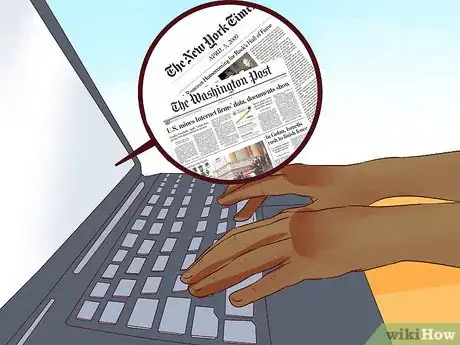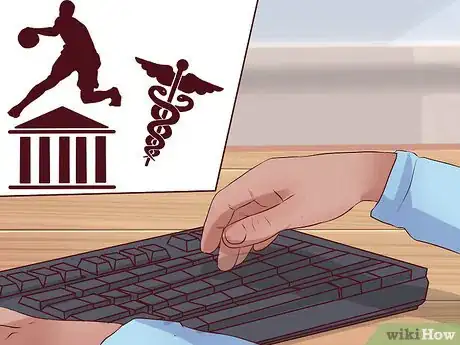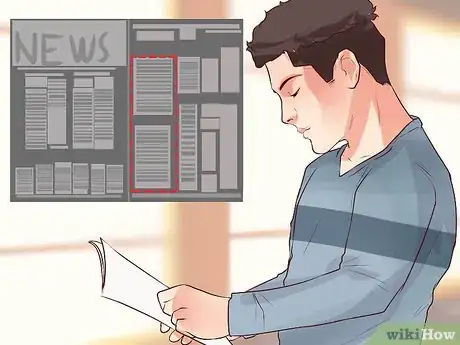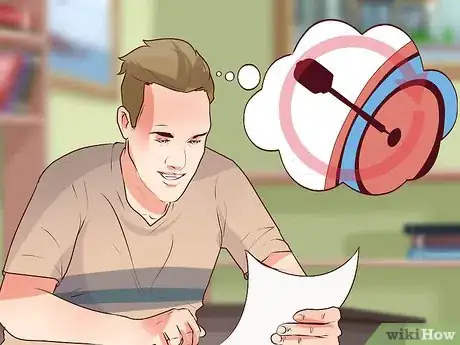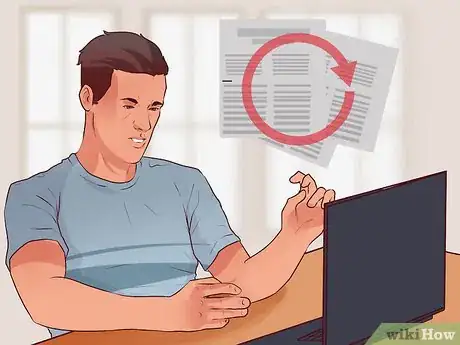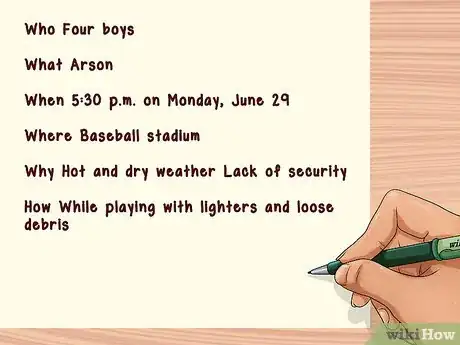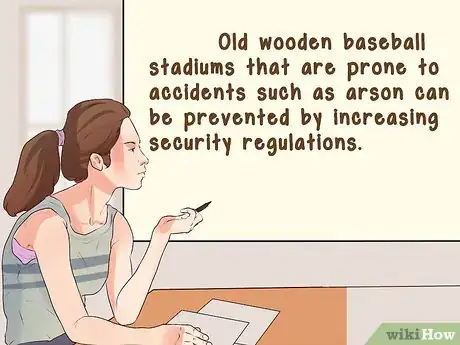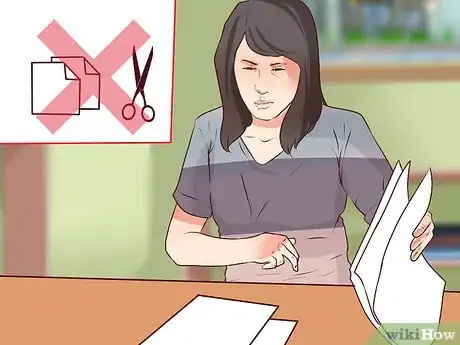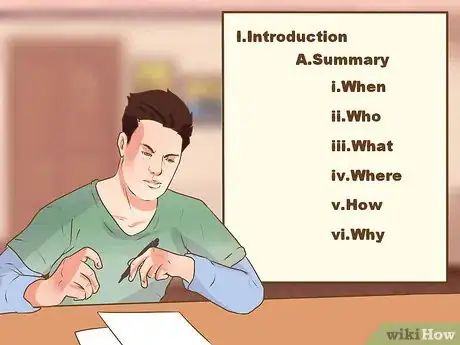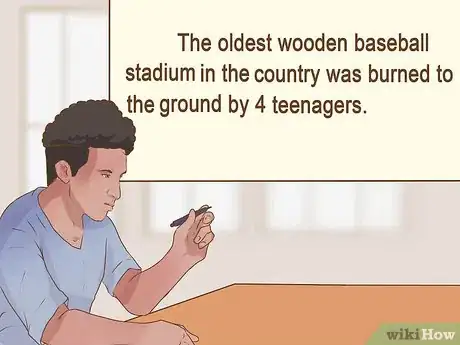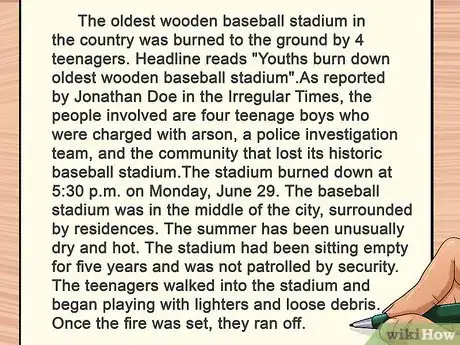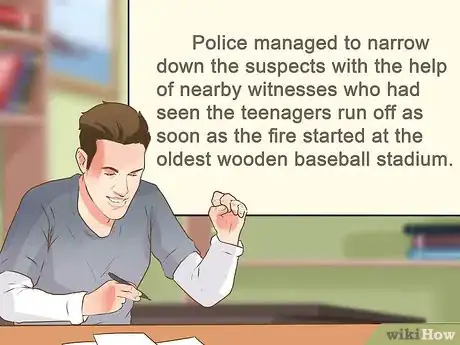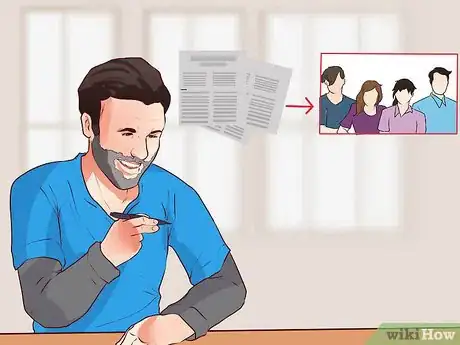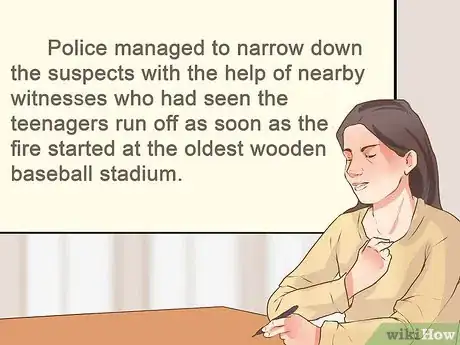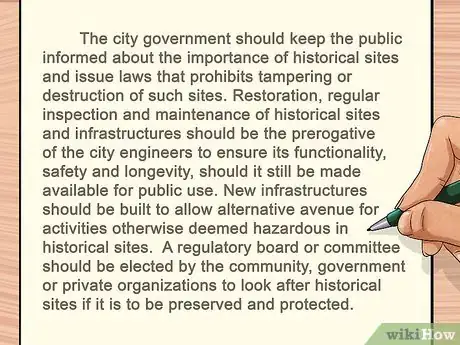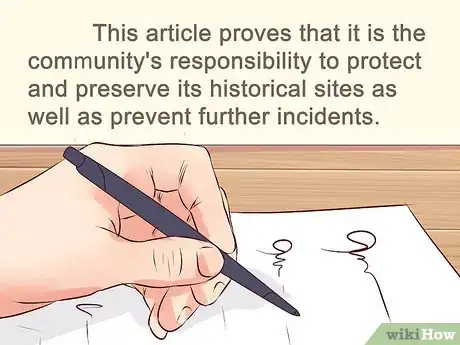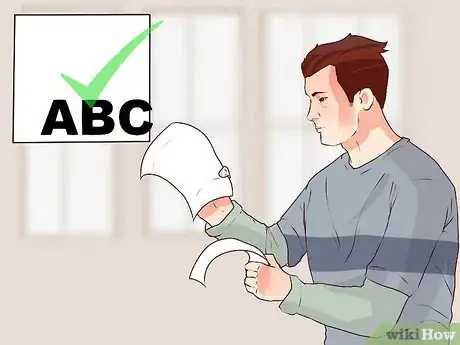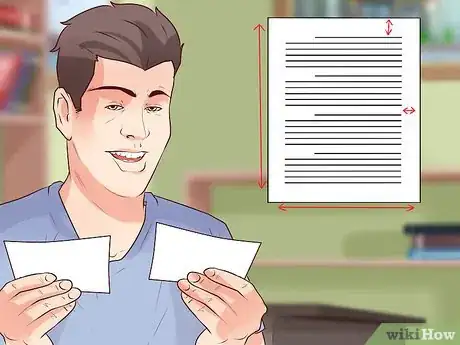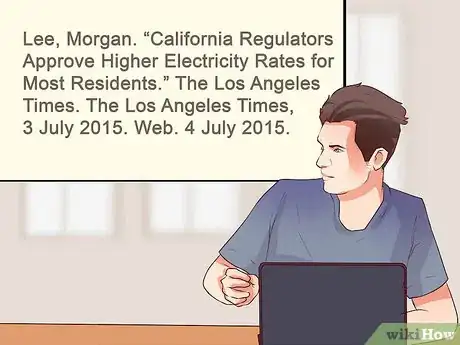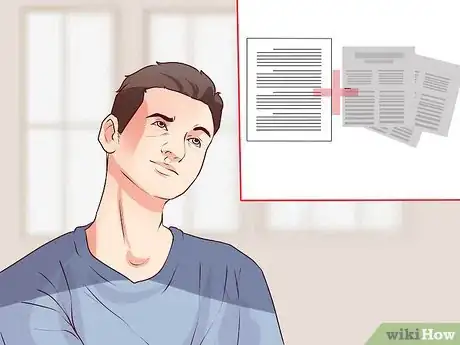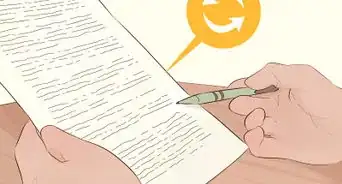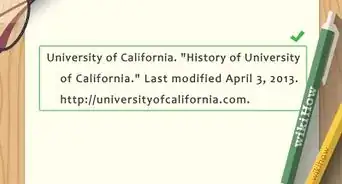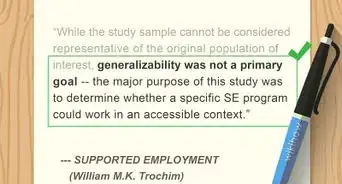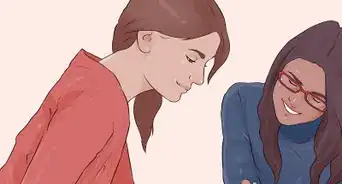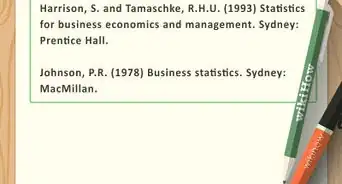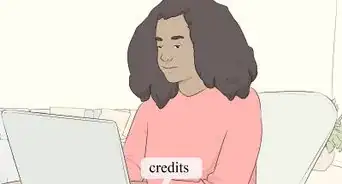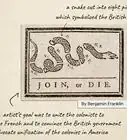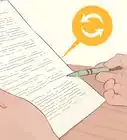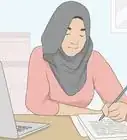This article was co-authored by Richard Perkins. Richard Perkins is a Writing Coach, Academic English Coordinator, and the Founder of PLC Learning Center. With over 24 years of education experience, he gives teachers tools to teach writing to students and works with elementary to university level students to become proficient, confident writers. Richard is a fellow at the National Writing Project. As a teacher leader and consultant at California State University Long Beach's Global Education Project, Mr. Perkins creates and presents teacher workshops that integrate the U.N.'s 17 Sustainable Development Goals in the K-12 curriculum. He holds a BA in Communications and TV from The University of Southern California and an MEd from California State University Dominguez Hills.
wikiHow marks an article as reader-approved once it receives enough positive feedback. In this case, several readers have written to tell us that this article was helpful to them, earning it our reader-approved status.
This article has been viewed 248,073 times.
A current events summary is a short description of an event that has recently happened or is going to happen. Current events summaries are often assigned by junior and senior high school educators for the purpose of teaching research, writing, and editing skills. The following steps will help you create a current events summary that is accurate, informative, and readable.
Steps
Choosing a News Article
-
1Use a reputable news source. Choose a source that offers well-written and well-researched news. Avoid blogs and other personal websites, since these types of writings are more rooted in opinion than factual news. Determine the credibility of the source by examining the author, the news source, who owns the news source, and so on.
- Some possible news sources might include your local newspaper or larger newspapers such as The New York Times, The Washington Post, The Los Angeles Times and others.
- Check with your teacher for suggestions. He may have specific news sources to use.
-
2Choose an article that is less than one week old. Since the assignment is to write about a current event, select an article that is fresh. The article should only be one to two days old when you write the summary. It should definitely be less than one week old by the time you turn it in.Advertisement
-
3Choose an article on the correct topic. You may have an assigned topic, such as healthcare, government, technology, international news, or sports. These are still very broad topics, so you should be able to find plenty of news on the topic.
- Most major newspapers have sections on their websites dedicated to certain topics. For example, the Washington Post has a section dedicated to “Tech.”
- Search online for an article on one of these topics. For example, try searching “healthcare news” to find new information.
-
4Make sure the article is a good length. You should choose an article that gives you enough information to work with. It should help you understand the topic at hand, and it should give you enough material to write about in your summary.
- An article that is one to two paragraphs long is probably not going to be lengthy enough.
Preparing to Write
-
1Read the entire article. Take some time to read through the entire article. Make sure you understand what the article says. Your objective with this assignment is to write a summary of the news story, so you need to fully understand the article.
- Look up any words you don’t know.
- Take notes on the article or highlight passages that you think are important.
-
2Recount the article. After you’ve read the article, try to recount the article out loud. You can either tell someone else or just tell yourself. This will help you figure out the main idea of the article.
- The headline typically indicates the article’s main idea, but the article will likely include more information that is relevant to your summary.
- Choose five main points from the article that you think are important.
- Find some keywords to get the main idea across to the people.[1]
-
3Read the article again. Once you’ve been able to retell the article’s story, read through the article again. Did you catch an important point that you missed before?
-
4Make a list of the five Ws and H. The five Ws and H are: Who, What, When, Where, Why and How.[2] These correspond to the details of the article that you’ve read. They help you make connections between the main idea and the various elements involved that make up the story.[3] Give specific details for each one. For example:
- Who: This is the person or group involved in the story. For a story on a recent arson case, you might say, “The people involved are four teenage boys who were charged with arson, a police investigation team, and the community that lost its historic baseball stadium.”
- What: This is the event or the action discussed in the story. In an arson case, it might be: “The oldest wooden baseball stadium in the country burned to the ground.”
- When: This is the date and time when the event took place: “The stadium burned down at 5:30 p.m. on Monday, June 29.”
- Where: This is where the event took place: “The baseball stadium was in the middle of the city, surrounded by residences.”
- Why: This is the cause or reason for the event: “The summer has been unusually dry and hot. The stadium had been sitting empty for five years and was not patrolled by security.”
- How: This point explains the ways in which the events took place and the connections between them: “The teenagers walked into the stadium and began playing with lighters and loose debris. Once the fire was set, they ran off.”
-
5Write a sentence that gives the impact of the story. Why is this story important? Why are we talking about it? After your list of the five Ws and H, write down your thoughts on the impact or importance of the news story.
- Think about the story’s connection to your community, the nation, or the world, for example.
Summary Section
-
1Set aside the article. When you start writing your summary, you want to be absolutely sure you are not plagiarizing in any way. Set aside the news article and instead, work with your list of the five Ws and H. [6]
-
2Outline the news article. The first paragraph of the current events summary is a summary of the events discussed in the article. Write an outline of the article, focusing on the five Ws and H. You may choose to rearrange the five Ws and H so that your summary makes sense.
- When you recounted the article to someone else, you highlighted the most important parts of the article. These things will go in your outline. Now your job is to put them in an order that makes sense.
-
3Write your topic sentence. The topic sentence for this paragraph is the main idea of the article. This sentence gives your reader an overview of what your summary will be about.
-
4Build upon your introduction with information about what happened. The next few sentences are where you include your five Ws and H. Construct a logical way of telling the reader what happened. This may or may not be in the same order as the news article.
- Depending on your assignment, this might be three or four sentences, or it might be seven to nine sentences. Check your assignment for your length requirement.
-
5Write a closing sentence. The last sentence of your paragraph should reiterate the main idea of the news article. Choose wording that is different from your topic sentence.[7]
Reflection Section
-
1Outline your thoughts about the article. The reflection paragraph[6] is your opportunity to make connections between this article and the community at large. Think about why this story is important. Think about the connection to your community, or your state, or the country. You might also think about the connection to your class. What themes are you discussing in class that relate to this article?
- Even though the reflection is short (usually just a paragraph), you should still aim to make an argument, at least to some degree. Determine the main point that you want to make and think about how you will support that main point.
-
2Write a topic sentence. The first sentence of your reflection should be an introduction to what you’ll be discussing in your reflection.
- Some teachers don’t allow the use of “I” (first person) in these reflections. Check with your teacher to determine if you can write in first person or not.
-
3Follow up with supporting sentences. Expand on your main point by giving specific examples from your news article.Build your paragraph in a logical way.
- Don’t just string together random thoughts about why the news story is important.
-
4Wrap up with a concluding sentence. Finish off your reflection with a sentence that summarizes what you’ve discussed in your reflection. Or, you might make a final key point about the ultimate impact of the news story.
Final Touches
-
1Proofread your article. Make sure your reader is going to focus on the content of your paper, rather than superficial elements like spelling and grammar. Correct all spelling and grammatical errors in your paper.
- Take a look at your verbs. If you use boring or the same verbs, your audience will get bored. See if you can make efficient choices of great action verbs.
- If you are handwriting your summary, you may need to write it out again as a clean copy after you’ve corrected any errors. For this reason, it may be preferable to type out the summary. Some teachers may require a typed paper.
-
2Follow guidelines for the assignment. Check your assignment for any requirements about how to format your paper. For example, you may need to use 12-point Times New Roman font with one-inch margins.
- If you have a grading rubric for the assignment, review this before turning in the assignment. Make sure you have met all the requirements to ensure a good grade.
-
3Include a citation for the article. If your assignment requires it, include on your paper where the article came from. For example, you might write an MLA citation for an article like this:
- Lee, Morgan. “California Regulators Approve Higher Electricity Rates for Most Residents.” The Los Angeles Times. The Los Angeles Times, 3 July 2015. Web. 4 July 2015.
-
4Include the article with your summary. If your teacher asks for it, staple or paperclip the original news article to your summary. If you got your article from a news website, print out the entire article. Make sure that all pages are included, since some articles go on to a second page (or longer).[7]
Community Q&A
-
QuestionHow long should a current events paper be?
 Community AnswerA current events paper should be at least a page or two. If you are a good writer and you explain yourself well, you can do two or three. If you are not very good at explaining and not repeating yourself, then go ahead and write more. The more you write, the better the understanding of your topic for the reader.
Community AnswerA current events paper should be at least a page or two. If you are a good writer and you explain yourself well, you can do two or three. If you are not very good at explaining and not repeating yourself, then go ahead and write more. The more you write, the better the understanding of your topic for the reader. -
QuestionHow do I write an executive summary?
 Community AnswerYou can write one by picking out some of the important details from an article and then put them in one paragraph.
Community AnswerYou can write one by picking out some of the important details from an article and then put them in one paragraph. -
QuestionHow can I write a good news reflection?
 Community AnswerJust follow the steps in this article.
Community AnswerJust follow the steps in this article.
References
- ↑ https://www.indeed.com/career-advice/resumes-cover-letters/how-to-write-summary-example
- ↑ https://k12.thoughtfullearning.com/minilesson/asking-and-answering-5-ws-and-h-questions
- ↑ http://coe.jmu.edu/learningtoolbox/5w1h.html
- ↑ www.acisd.org/getFile.cfm?serverFileName=3D7039FC7A-D973-59AD-3C95BCBCFDC1039D.pdf
- ↑ www.acisd.org/getFile.cfm?serverFileName=3D7039FC7A-D973-59AD-3C95BCBCFDC1039D.pdf
- ↑ http://alt-resource.teams.leedsmet.ac.uk/how-to-write-a-reflection
- ↑ https://owlcation.com/academia/How-to-Write-a-Summary
About This Article
A current events summary is a short review of a recent news story. To write your own, start by finding an interesting story from a reputable source, like a popular newspaper or news website. Read the full article and look up any words or phrases you don’t understand. Then, read the article again and take note of the most important facts, like who was involved, where and when the story took place, why it happened, and how it happened. Use these notes to write your summary. In your first sentence or 2, give a brief summary of what happened. Then, write a few more sentences to give your readers the extra details they need to know. For more tips from our Education co-author, including how to write a reflection on your current events summary, read on!
